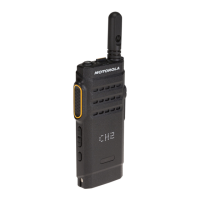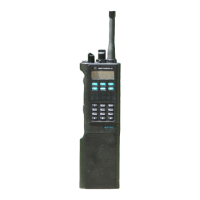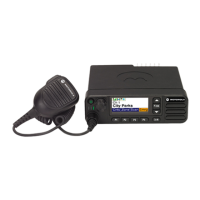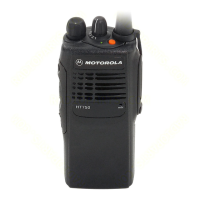• Private Automatic Branch Exchange (PABX) call
• Packet data
Depending on the codeplug configuration, the radio may indicate entering the LST with the following
notifications:
• Visible and audible
• Visible
• Audible
• None
To avoid unnecessary roaming and reduce congestion, Local Site Trunking Ignoring feature can be
enabled. When Local Site Trunking Ignoring feature is enabled, the radio temporarily ignores the
LST/WST parameter when selecting a site. However, the radio still takes other parameters such as the
Radio Signal Strength Indicator (RSSI) level of the cell into consideration when deciding on roaming.
Local Site Trunking Ignoring is a paid feature.
2.14.11
Cell Surveillance and Monitoring Threshold (Negative C)
The radio constantly calculates a normalized value that represents the signal strength of a cell. This
value is used by the radios to determine if the cell is usable and when to leave the cell.
In the default case, when the radio is camped on a cell, it initiates link failure procedures, such as leave
the cell, if this normalized signal strength value falls below zero. However via the Customer
Programming Software (CPS) it is possible to configure the radio to allow this normalized value to be
processed below zero; value can be set in 1db steps up to -5db. Reducing this value below zero allows
the radio to maintain service on a weak cell where the radio is unable to roam to a better cell.
2.15
Supplementary Services
Following is the description of the TETRA Supplementary Services (SS) that the radio supports in the
Trunked Mode Operation (TMO).
2.15.1
Dynamic Group Number Assignment
The radio supports dynamic addition and removal of talkgroups in its talkgroup list through TETRA
Dynamic Group Number Assignment (DGNA) and De-assignment signaling (SS-DGNA).
The radio responds to DGNA directed to it or to DGNA directed to a group the radio is attached to even
if the talkgroup is not programmed in the codeplug.
When a DGNA request to add a talkgroup is received, the radio adds the group in the first available
spot in the talkgroup list in the codeplug. Then you can scroll to the talkgroup to select the group. The
codeplug determines which DGNA operations are allowed for a group.
Depending on the group type, the following is allowed:
• Static - only selection is allowed.
• Semi-Static - selection and reassignment are allowed.
• Dynamic – selection, de-assignment, and reassignment are allowed.
The groups can be assigned as not attached, attached as scanned or attached as selected.
Assignment of the group through DGNA with attached as selected makes it the selected group of the
radio. If the group is assigned with attached as scanned, if it is not already in the currently active scan
MN002955A01-AA
Chapter 2: Services and Features
44 Send Feedback
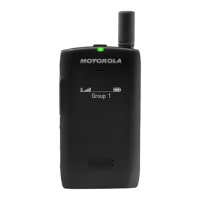
